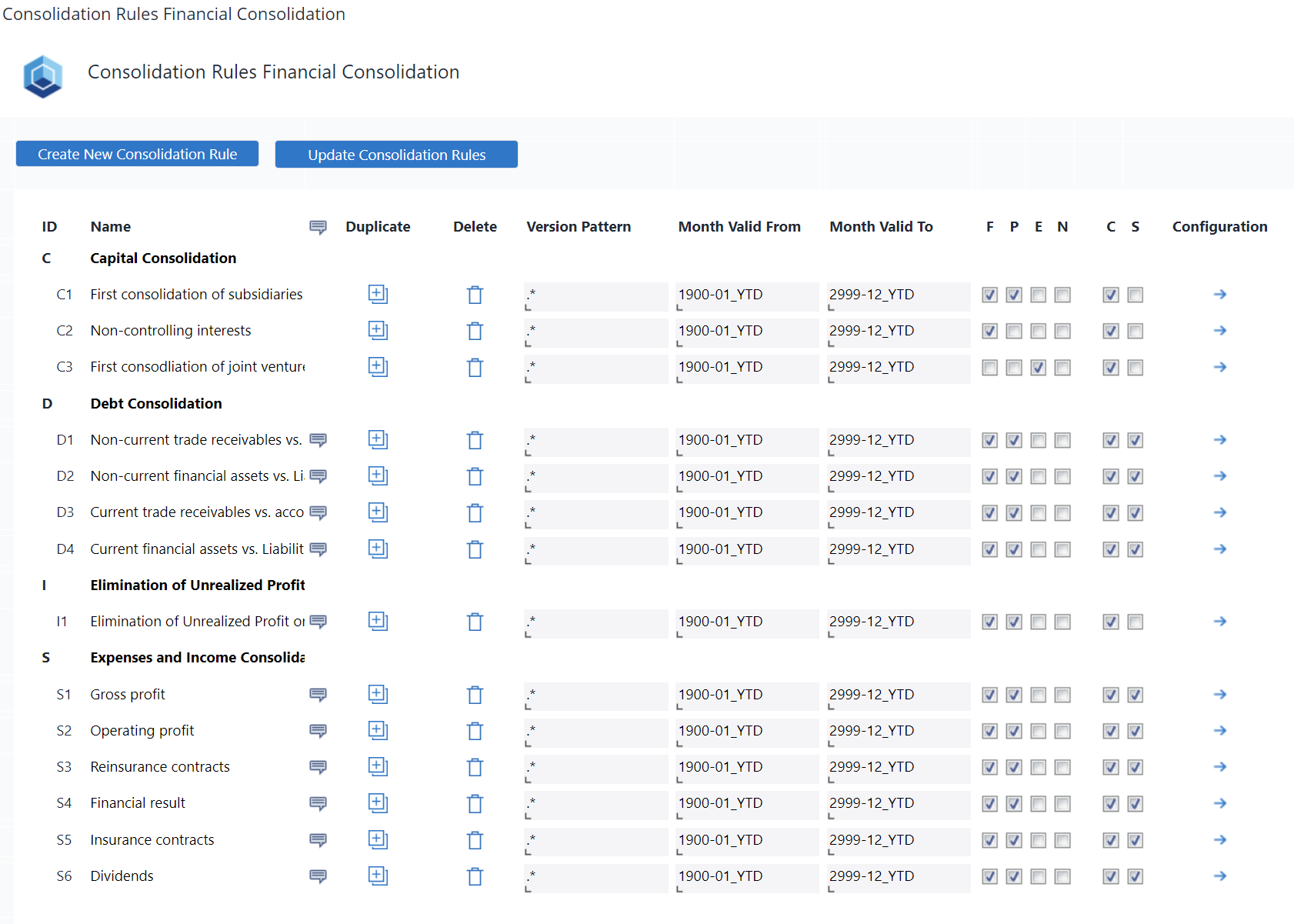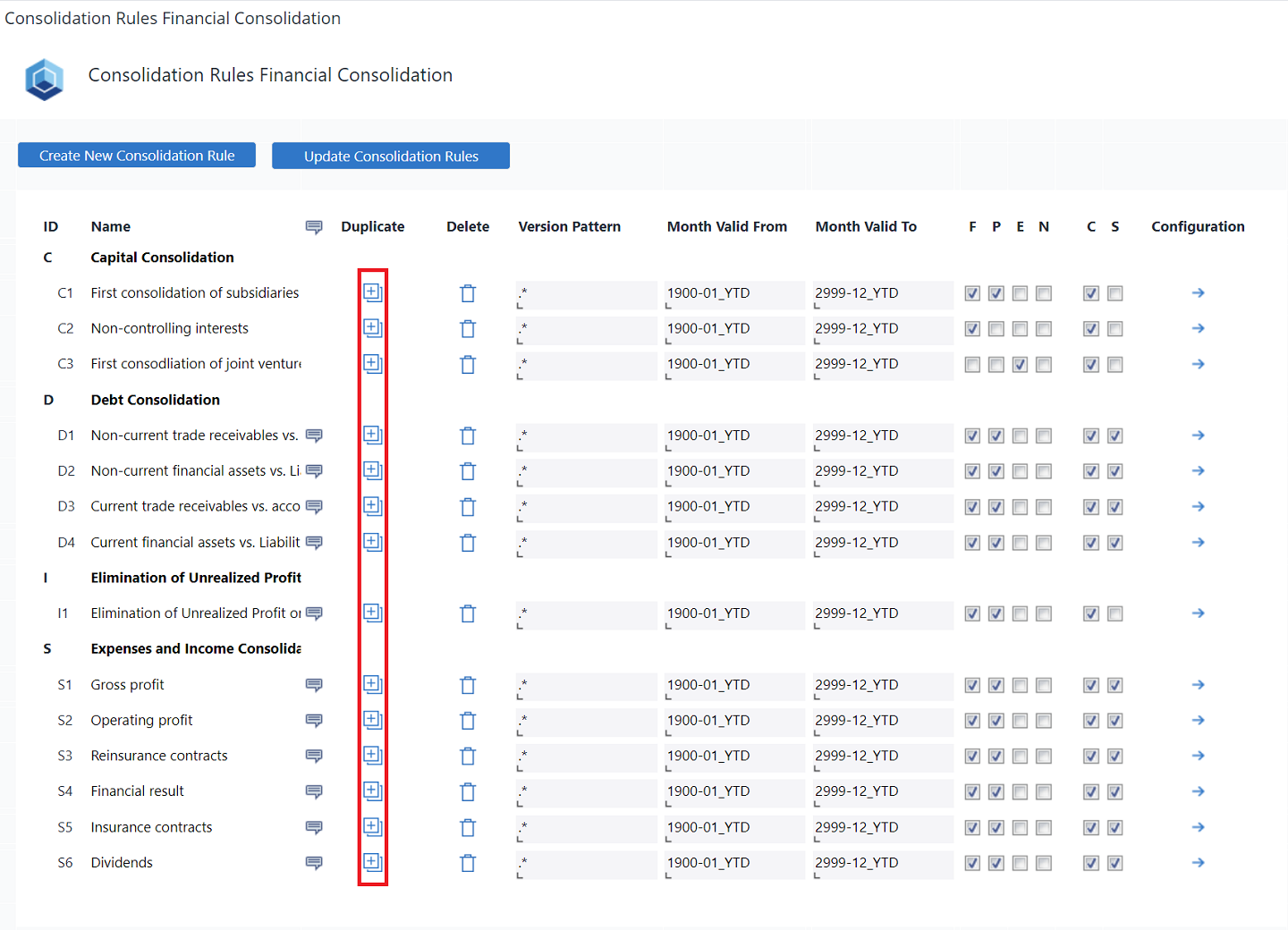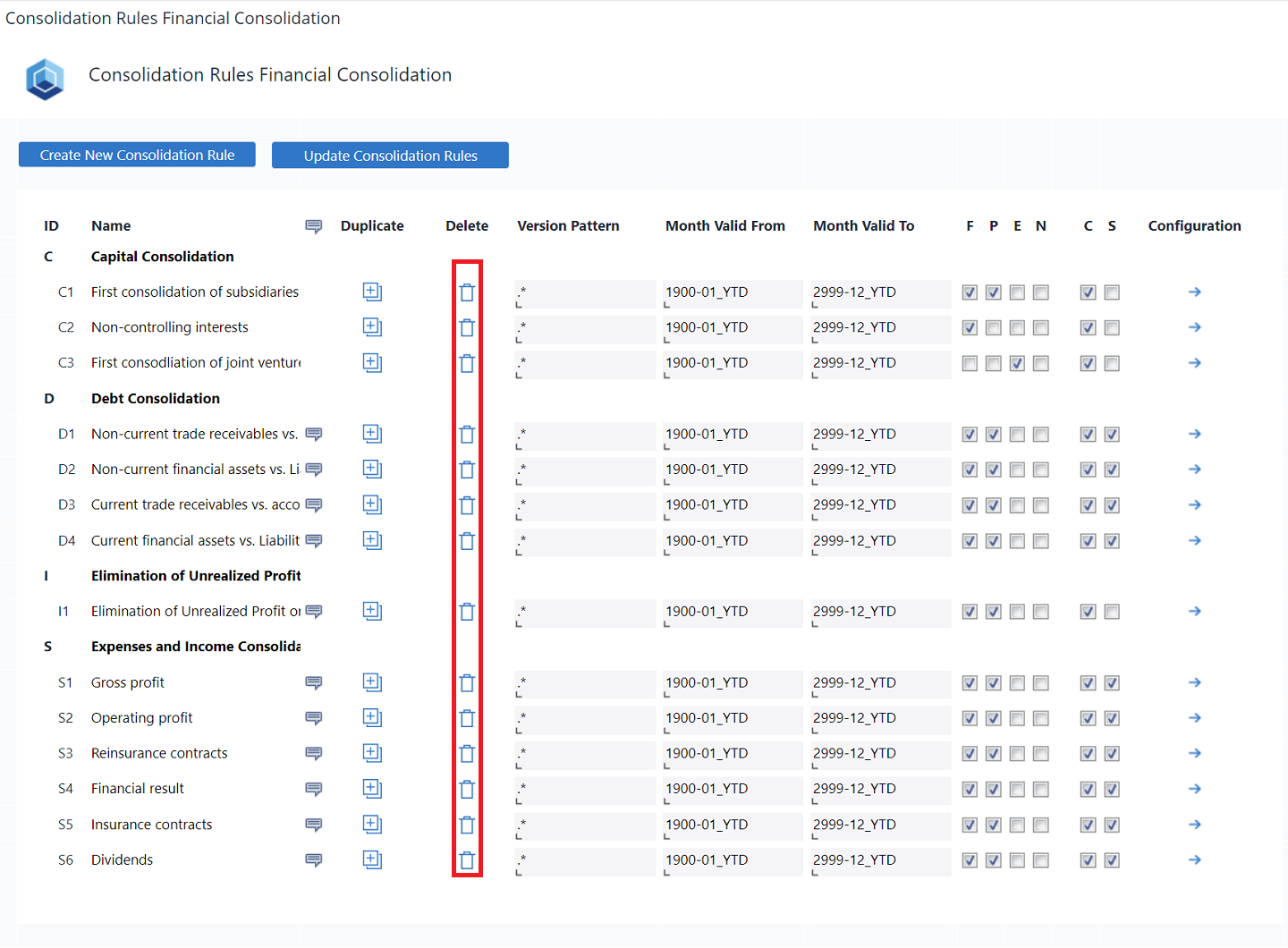Return to Financial Consolidation Model Overview.
The Consolidation Rules report provides data about the different Consolidation Rules and enables you to create and configure them.
Here you can access all the necessary information to configure and manage your Consolidation Rules. This page provides an overview of the rules that are in place with different reporting events, consolidation methods and ledgers they apply to. Additionally, you can access further configuration options through the hyperlink on the right side of the Consolidation Rules screen. This allows you to make adjustments and fine-tune your consolidation process as needed quickly.
Creating New Consolidation Rule
You can create a new Consolidation Rule by using the "Create New Consolidation Rule" button. Each Consolidation Rule has an ID, a Name, and a Description. Consolidation Rule IDs are automatically assigned and are a combination of a letter and a number. The letter comes from the Rule’s Consolidation Group, and the number corresponds to the number of rules in the Group. For example, the ID for the third Rule in the D- Debt Consolidation Group is D3. The Name and the Description sections are to be filled by the user.
Updating Consolidation Rule
You can update the Consolidation Rules by using the "Update Consolidation Rules" button.
Group
Group defines the execution order of consolidation rules. The default value is 0.
Version Pattern
The Version Pattern should be filled with a Regular Expression. By default, the Version Pattern is filled with a universal filter .* (containing an arbitrary sequence of arbitrary characters), which applies to all versions. However, you can restrict the Version Pattern by replacing the universal filter with a Regular Expression that matches the elements of your Version Dimension.
Months Valid From and Month Valid To
Months Valid From and Month Valid To enable you to select a section of your Month_YTD dimension and apply the Consolidation Rule to just that span. By default, the Months Valid From and Month Valid To range from 1900-01_YTD to 2999-12_YTD, but you can choose any period you wish from your Month_YTD Dimension (Financial Consolidation).
The String in the Months Valid From and Month Valid To follows the names of elements in the Month_YTD Dimension (Financial Consolidation) (yyyy-MM_YTD). Note that when the Month_YTD dimension is set up for fiscal years, the names should change to FYyyyy-MM_YTD.
Consolidation methods
You can also set up the Consolidation methods on the Consolidation Rules screen. The consolidation methods you can choose from are F (Full Consolidation), P (Proportional Consolidation), E (Equity Consolidation), and N (Not Consolidated).
Ledger filter
In the Ledger filter section, you can filter your ledger by choosing C (Consolidation) or S (Segment Consolidation).
Duplicating Consolidation Rule
You can duplicate the Consolidation Rules by clicking on the plus icon ![]() in front of each rule.
in front of each rule.
Once you click on the duplication icon, a pop-up appears, enabling you to select a Consolidation Group, Consolidation Rule name, and Description.
Deleting Consolidation Rule
You can delete Consolidation Rules by clicking on the bin icon![]() in front of each rule.
in front of each rule.
Version Pattern
The Version Pattern should be filled with a Regular Expression. By default, the Version Pattern is filled with a universal filter .* (containing an arbitrary sequence of arbitrary characters), which applies to all versions. However, you can restrict the Version Pattern by replacing the universal filter with a Regular Expression that matches the elements of your Version Dimension.
Months Valid From and Month Valid To
Months Valid From and Month Valid To enable you to select a section of your Month_YTD dimension and apply the Consolidation Rule to just that span. By default, the Months Valid From and Month Valid To range from 1900-01_YTD to 2999-12_YTD, but you can choose any period you wish from your Month_YTD dimension.
The String in the Months Valid From and Month Valid To follows the names of elements in the Month_YTD dimension (yyyy-MM_YTD). Note that when the Month_YTD dimension is set up for fiscal years, the names should change to FYyyyy-MM_YTD.
Consolidation methods
You can also set up the Consolidation methods in the Consolidation Rules screen. The consolidation methods you can choose from are : F (Full Consolidation), P (Proportional Consolidation), E (Equity Consolidation), and N (Not Consolidated).
Ledger filter
In the Ledger filter section, you can filter your ledger by choosing C (Consolidation) or S (Segment Consolidation).
Consolidation Rule Report
Clicking on the link in the Configuration section of the Consolidation Rules screen directs you to the Consolidation Rule Report.
Updated August 13, 2025



